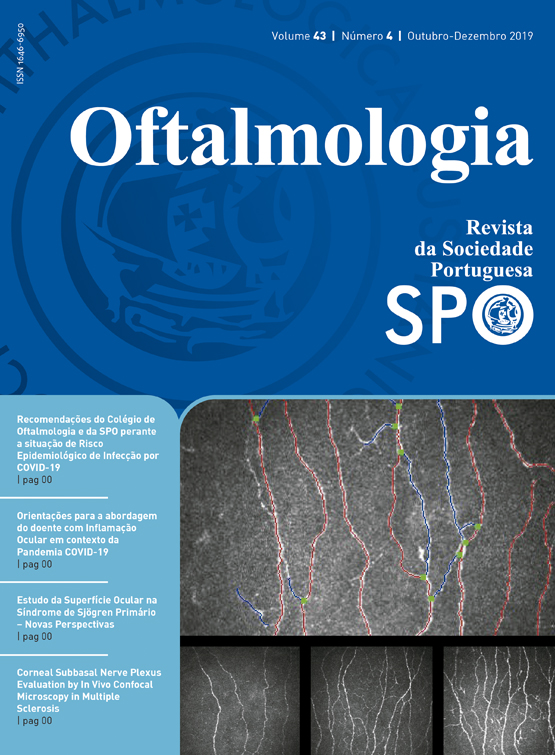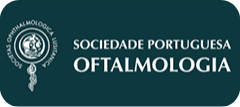New Perspectives of Ocular Surface Evaluation in Primary Sjögren’s Syndrome
DOI:
https://doi.org/10.48560/rspo.15198Abstract
Introduction: The diagnosis of Primary Sjögren's Syndrome (pSS) is sometimes challenging, taking into account the clinical heterogeneity and the variability of diagnostic criteria fulfillment. This study aims to evaluate the tear meniscus (TM) and corneal sub-basal nerve plexus (SBNP) in a population with pSS.
Material and Methods: Cross-sectional study of 50 patients with pSS and 20 healthy controls. Conventional dry-eye disease evaluation was performed, using Schirmer test I without anaesthesia, tear break-up time and corneal fluorescein staining. TM height and area were analyzed using anterior segment optical coherence tomography (AS-OCT) and corneal SBNP was evaluated using in vivo Confocal Microscopy (IVCM), with study of nerve density, length and tortuosity. Differences in pSS ophthalmic features were analyzed according to phenotype profile. Data analysis was conducted by IBM-SPSS Statistics 25.0.
Results: TM height was significantly lower in pSS in contrast to the controls (p < 0.001). Corneal SBNP density and length were significantly lower and tortuosity significantly higher in pSS patients comparing to controls (p < 0.001, p = 0.004 and p = 0.001, respectively).
Conclusion: AS-OCT and IVCM may be useful in the evaluation of lachrymal unit dysfunction in pSS, complementing the conventional methods used in the evaluation of dry-eye disease.
Downloads
Downloads
Published
How to Cite
Issue
Section
License
Do not forget to download the Authorship responsibility statement/Authorization for Publication and Conflict of Interest.
The article can only be submitted with these two documents.
To obtain the Authorship responsibility statement/Authorization for Publication file, click here.
To obtain the Conflict of Interest file (ICMJE template), click here





